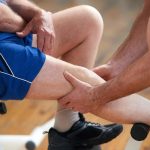
Movement is medicine, or so they tell people with knee osteoarthritis — but are they right? A recent evidence review calls into question just how helpful exercise can be for easing the pain of knee arthritis. “Exercise probably results in an improvement in pain, physical function, and quality of life in the short‐term,” concluded the research team led by Belinda Lawford, a research fellow in physiotherapy with the University of Melbourne in Australia. “However, based on the thresholds for minimal important differences that we used, these benefits were of uncertain clinical importance,” the team added in its report published previously in the Cochrane Library. The review casts a slight shadow on what has been considered an integral part of therapy for knee pain. “Movement is an essential part of an osteoarthritis treatment plan,” the Arthritis Foundation says on its website, recommending that people take part in strength training, stretching, aerobics, and balance exercises. For the new review, the team evaluated data from 139 prior clinical trials involving nearly 12,500 participants that occurred up through early Jan. 2024. On a 100-point scale, exercise for knee arthritis improved: Pain by 8.7 to 13.1 points Physical function by 9.7 to 12.5 points Quality of life by 4.2 to 6.1 points But while those were significant improvements, they did not always meet established scores for making a minimal important… read on > read on >


















